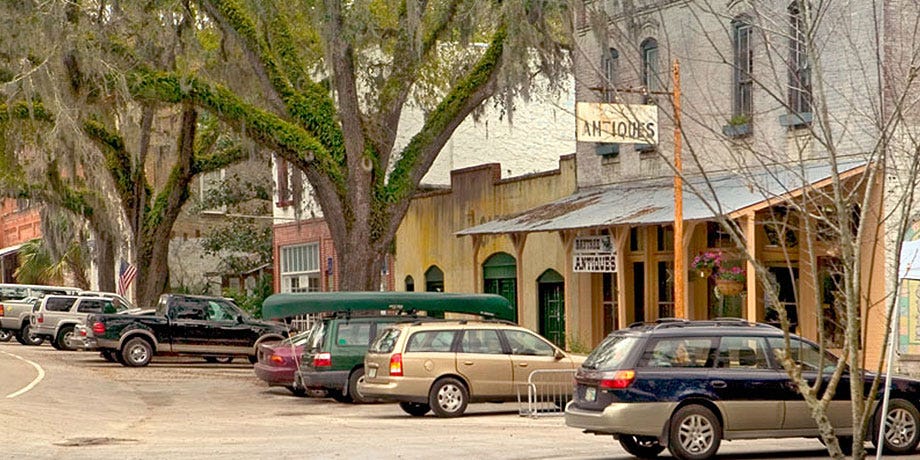
The key to a successful magic trick is to guide where people look or think. In everyday life, when someone points somewhere , we expect the important stuff to happen where they point. Magicians and mentalists use those expectations to steer our attention away from what they’re doing so they can surprise us with something we don’t expect. The only reason it works is because we have years of experience to tell us where to look to see what is important.
Driving is no different. We have an automatic monitoring system that keeps an eye on a lot more than our eyes can focus on (Framework 1). It knows that people are the most interesting and risky types of things to see (Framework 2). Those same automatic systems also know that people have to be close enough to interact if they’re going to be a treat or threat (Mental Framework 3). Each of those first three are hardwired into your mental faculties. They need exposure to life experience to develop fully, but the potential is primal—like a plug and play mouse. Most computers know what to do with that device when it gets plugged in. Our brains know how important people are before they ever see them, but they have to have experience seeing them to develop those capacities.
Mental Framework 4 goes beyond what is pre-programmed for all human beings to address our own specific reality based on our previous experiences in that reality.
It’s a matter of Operant Conditioning
Remember Pavlov’s dogs? Pavlov was researching saliva production in dogs and he noticed that the dogs would start salivating when they heard the footsteps of the researcher bringing the food, so he tried ringing a bell every time he would feed the dogs. Within a few weeks, the dogs would start salivating with just the bell. My own dogs do the same thing every time I sit down to dinner because they know I’m going to give them their vitamin treats.
You see what you expect to see.
It’s an issue of confirmation bias. If you expect to see people in a space, you look for evidence to confirm that they are there and that your expectation is correct. If you don’t expect to see them there, you don’t look for them, and you won’t be as likely to see them, even if they are there.
When we started the Mental Frameworks project, I made the same bad assumption that everyone else in engineering has made: If we provide clear line of sight and someone is there, they will get seen. We were nearing the end of the study before I realized how bad an assumption that is. This is the clip that scared me:
PJ and I made this video to try out what perceptual narrowing looks like in the real world. We took the shapes from the original study that Rogers, Kadar, & Costall did in 2005, interpolated between them for different speeds, and superimposed that on a typical Central Florida drive. The red blobs on the side are pedestrians—3 of them to be exact. What scared me is that we didn’t see them until the 4th time through, and we were actively looking for them in an office and could run the playback at any speed we wanted. If I couldn’t see them there, how many drivers saw them?
Back to the drawing board
In the NDS data tabulation, we had asked whether there was a vulnerable user present. We went back to them and asked them whether or not the driver saw the vulnerable users the tabulators had seen in the video feeds. Turns out that those non-motorized users were only getting seen about half the time. There were some clear patterns to when they would get seen and an interesting feedback relationship:
If the environment was wide, they didn’t get seen (unless it was so wide open they couldn’t miss them—like on the edge of a highway)
If someone was present frequently, they got seen a more frequently
If they were driving very slowly, vulnerable users would get seen 60-80% of the time. Between 20 and 40 mph, it was about 50/50. Above 40 mph, things went downhill until the environment got so wide open (and the pedestrians were so rare) that they got seen because they were so out of place they were worth noticing.
If the drivers rarely saw someone in a location (whether they were there or not), they drove faster.
This is what it looks like when you graph it:
Obviously there’s a feedback relationship here. People don’t want to be next to fast moving traffic and drivers are going to go faster when they don’t expect anyone there. The drop is pretty amazing though. If a driver actually sees someone in a space every other time they go through, their speed is typically in the 10-20 mph range. If they’re only seeing someone one out of every 10 times, speeds were in the 30-50 mph range.
Building Anticipation
There’s basically two ways to generate that expectation:
Your own personal experience in that space.
Your experience with other spaces that look like this one.
For instance, if I’m driving around Sugarloaf Mountain on a Saturday morning , I expect to see platoons of spandex clad bikers in large clumps. Even though it’s a very rural road and Sugarloaf is not much of a mountain, I know that professional cycling teams use that area for their training grounds—because I’ve gotten caught behind them before. There’s a lot of twists and turns and the typical speed is 50+, but we all keep an eye out for them.

On the other hand, I can drive in any downtown area or small retail cluster that has on-street parking and cute storefronts and I’ll expect to see people walking around. That holds true from Micanopy to Montreal. I don’t need to have been there before.

On the other hand, there’s nothing like an uninterrupted subdivision wall to say, “no reason for anyone to be here…” You can put the prettiest trail along it. That random jogger is not going to make any driver slow down.
Ok, this one might:

Truth be told, that 10 mph speed limit is the most shocking thing I’ve seen in a long time. As if.
Come back early next week and we’ll talk about the features that drivers use to build that anticipation that don’t involve defying social conventions.





